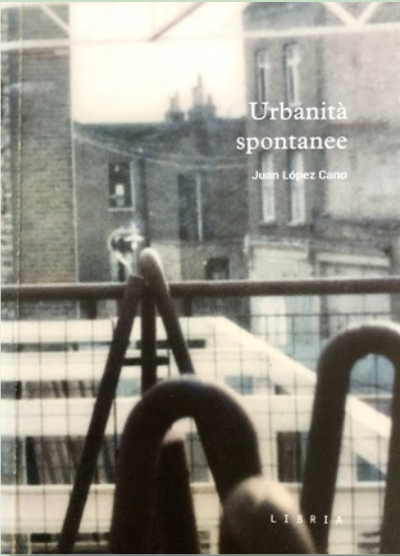URBANITÀ SPONTANEE
Juan Lopez Cano
URBANITÀ SPONTANEE
Libria - 2020
When we talk about public space we think only of open space, the places in the city. When Cedric
Price thought about his architecture, the spontaneous component, the actions of the users were the
important part of the generative diagram of the project, architecture for Price was something that
gave shape to spontaneity.
The use of this term by the author of the book, a member of the Orizzontale studio, is perhaps the
most interesting part of this brief history of public architecture.
The paradigm of participation has, in my opinion, always been a risk that only a few designers
have been able to face in the best way. The term Spontaneity, on the other hand, encapsulates new
potentialities for an architecture that, besides being exploited for its functional characteristics, must
leave space for users to their freedom of movement, flexibility of use and the reversibility and reuse
of the architecture itself.
The projects narrated in this book in fact have the purpose of being objects but at the same time a
mirror of a community. They are children of a concrete radicality, the same concreteness hidden in
every proposal of the architect Price.
It is a book written by a designer who tries to understand the reality that surrounds him by reading
the history of contemporary architecture. It is a biased book because each project presented hides
something that the author considers interesting for his projects. The book thus becomes a manual of
design actions that through a retroactive path become tools to imagine the future.
Quando si parla di spazio publico si pensa unicamente allo spazio aperto, ai luoghi della città.
Quando Cedric Price pensava le sue architetture, la componente spontanea, le azioni dei fruitori
erano la parte importante del diagramma generativo del progetto, l’architettura per Price era
qualcosa che dava forma alla spontaneità.
L’uso di questo termine da parte dell’autore del libro, membro dello studio Orizzontale, è forse la
parte più interessante di questa breve storia d’architettura pubblica.
Il paradigma della partecipazione è a mio avviso da sempre un rischio che solo pochi progettisti
hanno saputo affrontare al meglio. Il termine Spontaneità racchiude invece nuove potenzialità
per un’architettura che oltre ad essere sfruttata per le sue caratteristiche funzionali, deve lasciare
spazio agli utenti alla loro libertà di movimento, alla flessibilità d’uso e alla reversibilità e al riutilizzo
dell’architettura stessa.
I progetti raccontanti in questo libro infatti hanno lo scopo di essere oggetti ma allo stesso tempo
specchio di una comunità. Sono figli di una radicalità concreta, la stessa concretezza nascosta in
ogni proposta dell’architetto Price.
È un libro scritto da un progettista che cerca di capire la realtà che lo circonda leggendo la storia del
contemporaneo. È un libro di parte perché ogni progetto presentato nasconde qualcosa che l’autore
ritiene interessante per i propri progetti. Il libro diventa così un manuale di azioni progettuali che attraverso un percorso retroattivo diventano strumenti per immaginare il futuro.
